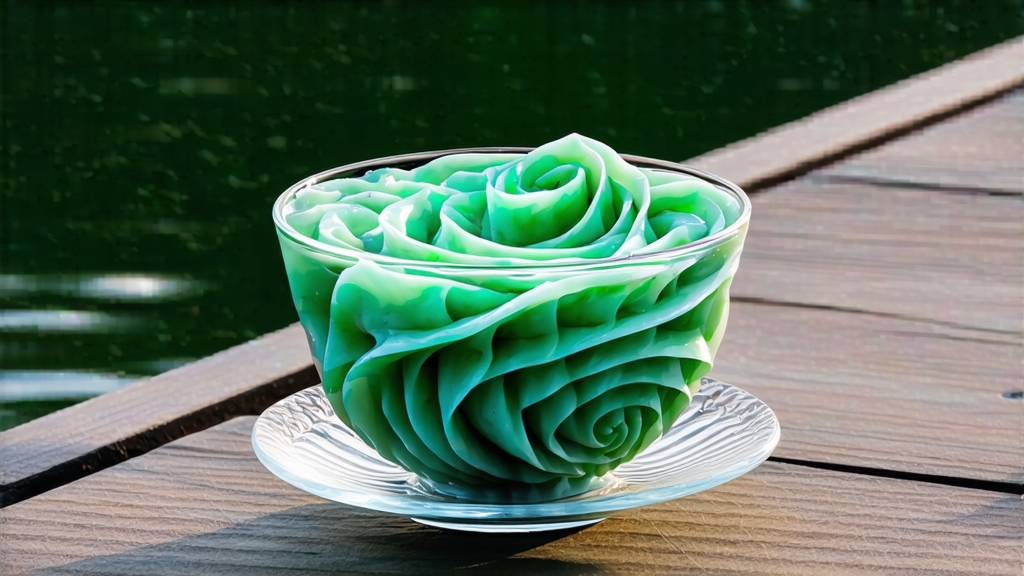
Biluochun, whose name translates literally to “Green Snail Spring,” is one of China’s ten most celebrated teas, yet it remains a delicate secret outside serious tea circles. Produced only in a micro-zone where the Dongting mountains plunge into Taihu Lake in Jiangsu Province, this green tea is prized for its tiny spiral-shaped leaves, downy silver tips, and an aroma so fragrant that the Qing-dynasty Emperor Kangxi is said to have renamed it “Green of Spring” because its perfume reminded him of fresh apricot blossoms.
History
Local chronicles credit Biluochun’s birth to the late Ming dynasty (17th c.), when tea pickers in Dongting Shan noticed that leaves growing wild among peach, plum, and loquat trees absorbed the orchard fragrance. Monks from the nearby Temple of Water and Moon began pan-firing the leaf, creating a tea so floral that tribute carriages carried it 1,200 km north to the Forbidden City. The Kangxi Emperor’s 1699 Jiangnan tour sealed its fame; court poets compared its aroma to “a spring breeze locked inside a snail shell.”
Terroir & Harvest
Only three hills—Dongting East, Dongting West, and the tiny islet of Piao Miao—produce authentic Biluochun. The lake acts as a thermal regulator, wrapping the slopes in morning mist that filters UV light and elongates the budding season. Tea bushes intercrop with fruit trees; fallen petals contribute natural floral volatiles to the soil, while bees transfer blossom yeasts to the leaf surface. Picking begins when the air temperature holds steady at 10–12 °C, usually two weeks before Qingming festival. The standard is one tender bud plus the imminent leaf, no longer than 2.5 cm, plucked before 9 a.m. while dew still glistens.
Crafting the Spiral
Within four hours of plucking, the fragile shoots undergo a six-step ritual that has changed little since the Kangxi era:
- Withering—leaves are laid 2 cm thick on bamboo trays in shaded draft corridors for 60–90 min, reducing moisture to 68 %.
- Primary pan-firing (“shaqing”)—a 260 °C wok is swabbed with fresh peach leaves to perfume the metal; 250 g of leaf are tossed for 3–4 min until the sound of “popcorn subsides into sizzle.”
- Rolling—while still at 50 °C, the tea is hand-rubbed in clockwise motions against the wok wall, forming the signature tight spiral; this takes 12–15 min and demands forearm strength equal to kneading 500 loaves.
- Re-firing (“cuo tuan”)—temperature drops to 70 °C; leaves are gently cupped and rotated until white down becomes visible, a visual cue called “white hairs reveal.”
- Low-temperature baking—charcoal embers under a wire mesh maintain 50 °C for 30 min, driving residual moisture to 5 %.
- Rest and fragrance capture—finished tea is sealed overnight in unglazed Yixing clay jars lined with orchard petals, allowing micro-oxidation that stabilizes the aroma compounds linalool and geraniol.
Grades & Nomenckature
Chinese merchants classify Biluochun into seven grades, but connoisseurs simplify to three:
- Supreme (Tou Cai): 6,000 buds yield 100 g; spirals weigh 0.03 g each; liquor glows like pale chardonnay.
- Fine (Te Ji): 4,500 buds per 100 g; balanced orchid and snap-pea notes.
- Standard (Yi Ji): 2,500 buds; still fragrant but with a pleasant astringency reminiscent of Sauvignon Blanc.
Brewing Ritual for the International Table
Water: Volvic or any soft water under 80 ppm TDS; hard water dulls the magnolia aroma.
Temperature: 75 °C. Boiling water scalds the down, releasing bitter catechins.
Ratio: 1 g leaf to 30 ml water.
Vessel: 250 ml tall glass to watch the “tea dance.”
Steps:
- Warm the glass with 50 ml 75 °C water; discard.
- Add 3 g leaf; let residual heat awaken aroma for 10 s.
- Fill to one-third volume, swirl gently; buds begin to